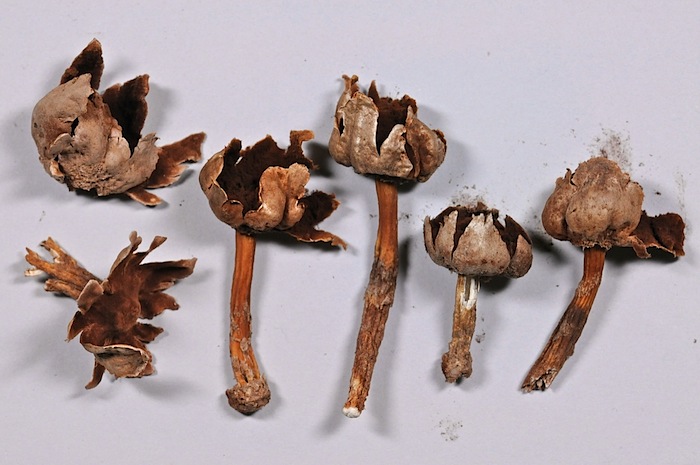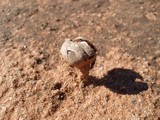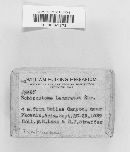
|
|
|
|
Family: Agaricaceae
[Tulostoma laceratum Ehrenb. ex Fr.] |
Cunningham GH. 1942. The Gasteromycetes of Australia and New Zealand. J. McIndoe, Denedin.
SCHIZOSTOMA LACERATUM Ehrenberg, ex Leveille, Plate xxx, fig. 1; xxxvi fig. 54; xxxvii, fig. 12. Annales des Sciences Naturelles, Ser. III, vol. 5, p. 165, 1846. Tulostoma laceratum (Ehrenb.) Fr., Syst. Myc. vol. 3, p. 44, 1829.Tylostoma schweinfurthii Bres., ex P. Henn. in Eng. Bot. Jahrb., vol. 14, p. 359, 1891. Queletia laceratum (Ehrenb.) Ahmad, Jour. Indian Bot. Soc., vol. 20, p. 136, 1941. Q. mundkuri Ahmad, l.c. Peridium globose, 20-25 mm. diameter; exoperidium a tenuous sand-hyphal layer disappearing at maturity save from the basal portion; endoperidium umber brown, firm, papyraceous, exterior becoming polished and somewhat pitted save where remnants of the exoperidium persist, dehiscing by extensive irregular fissuring from the apex downward. Stem to 3 cm. long, 3 mm. thick, equal or tapering slightly at the base, umber, longitudinally striate and covered with appressed scales, with a small mycelial pad at the base, inserted in a socket at the base of the peridium. Gleba umber brown, tinged with purple; capillitium threads copious, short, flaccid, tinted yellow, thin walled, irregular in shape and length, frequently with short lateral branchlets with rounded ends, not septate. Spores subglobose, less commonly globose or shortly elliptical, 4.5-6 x 4-5 u, epispore chestnut brown, 0.75 u thick, smooth. Type Locality: Africa. Distribution: Africa; India; Austrlia. Central Australia: Simpson Desert, north of Lake Eyre, collected by the Simpson Desert Expedition of 1929 (1). |























